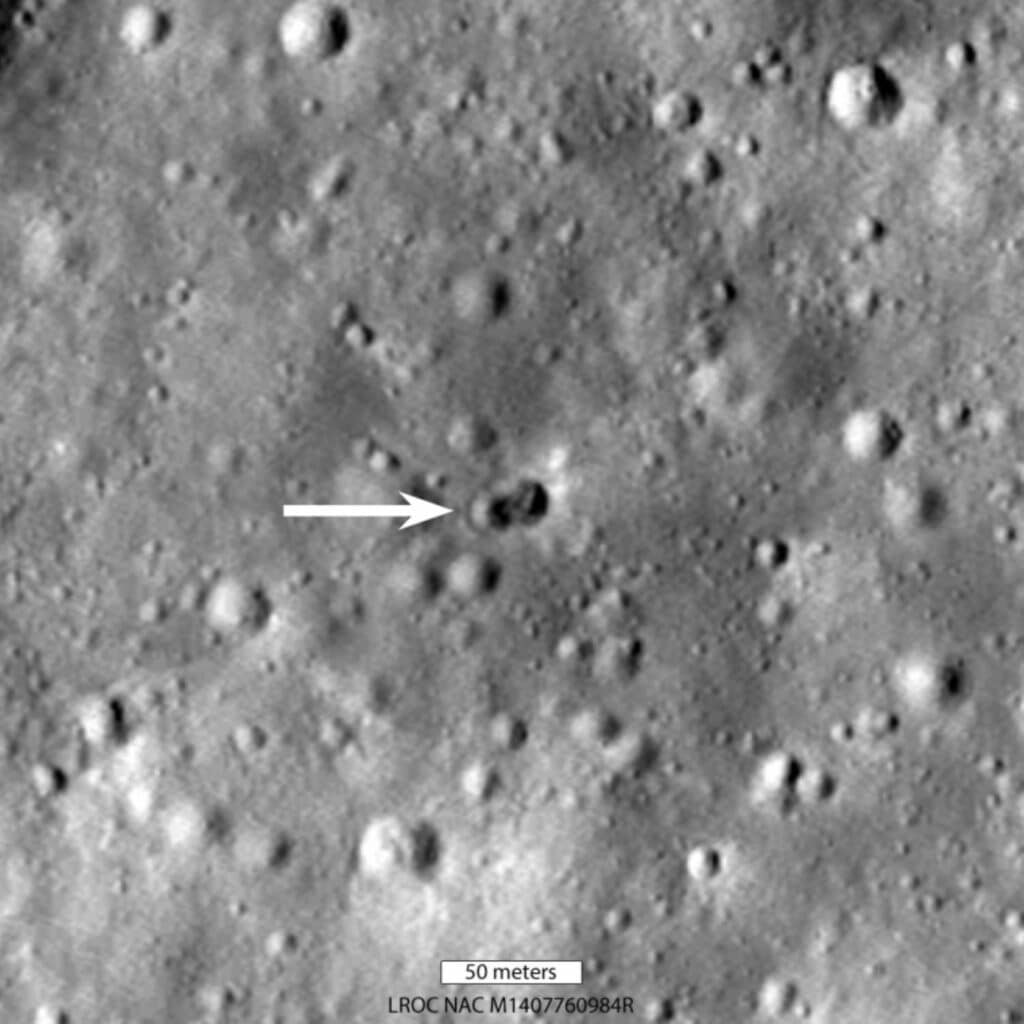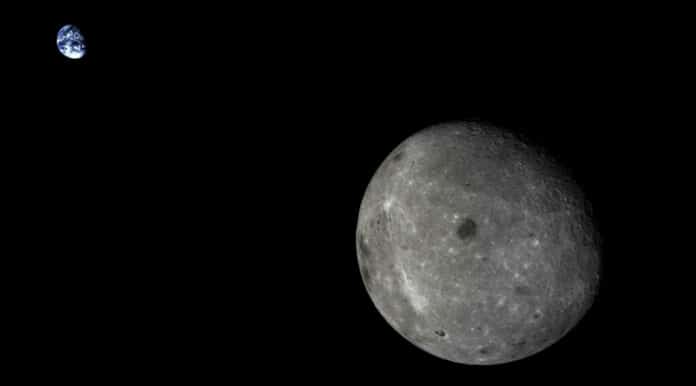In March 2022, Something surprising happened on the Moon’s far side. A part of a space rocket hit the Moon’s surface near the Hertzsprung Crater, an enormous impact feature on the far side of the Moon that is never directly visible from Earth.
The impact left behind not one but two craters, generating conjecture over the specific object that ultimately found a resting place on the lunar surface.
This caught the attention of researchers, leading to a recent study by the University of Arizona that finally solved the mystery. The study suggests that the object was a booster from a Chinese space rocket spinning around for several years. Even more interesting is that the rocket stage possibly had an extra, secret payload.
Seven years ago, researchers at the UArizona-led Catalina Sky Survey discovered an object moving briskly between Earth and the Moon. They named it WE0913A, although they didn’t know who it belonged to.
Based on its path through the sky, WE0913A was initially thought to be an errant SpaceX Falcon 9 rocket booster from a 2015 launch, with a trajectory that put it on a path to hit the Moon. Initial observations with the Raptor Telescope, built by the student team, and spectral analysis soon tracked the precise light signals bouncing off the object’s surface.
They concluded that WE0913A’s light reflection signature and the way it moved through space made it more likely to be a booster from a Chang’e 5-T1, a rocket launched in 2014 as part of the Chinese space agency’s lunar exploration program. While the Chinese space agency claimed the rocket booster burned up in Earth’s atmosphere upon re-entry, the U.S. Space Command confirmed the rocket’s third stage never re-entered the Earth’s atmosphere.
Although the Chinese space agency asserted that the rocket booster burned up in the Earth’s atmosphere upon re-entry, the United States Space Command confirmed that the rocket’s third stage never made a second pass through the atmosphere.

Vishnu Reddy, a professor of planetary science at the Arizona Lunar and Planetary Laboratory and the director of Space4 Center, said, “As the object is spinning, we see variations in the right light it reflects as the visible surface area changes. When the broad side of the rocket is pointed at you, you get more light; as it turns, you get less light from that side.”
The team concluded that WE0913A did not represent a rocket booster by comparing the light curve data with computer models of thousands of imaginary objects traveling through space.
Tanner Campbell, a doctoral student at the University of Arizona Department of Aerospace and Mechanical Engineering in the College of Engineering and the study’s first author said, “Something that’s been in space as long as this is subjected to forces from the Earth’s and the Moon’s gravity and the light from the sun. So you would expect it to wobble a bit, particularly when considering that the rocket body is a big empty shell with a heavy engine on one side. But this was tumbling end-over-end, in a very stable way.”
“In other words, the rocket booster must have had some kind of counterweight to the two engines, each weighing 1,200 pounds without fuel.”
“We know the booster had an instrument deck mounted to its top end, but those weigh only about 60 pounds. We performed a torque balance analysis, which showed that this weight would have moved the rocket’s center of gravity by a few inches – it wasn’t nearly enough to account for its stable rotation. That leads us to think that Something must have been more mounted to the front.”
The impact revealed additional hints: rather than leaving one crater on the Moon, the rocket booster left two, around 100 feet apart. Once more, it is highly uncommon.
Campbell said, “This is the first time we see a double crater. We know that in the case of Chang’e 5 T1, its impact was almost straight down, and to get those two craters of about the same size, you need two roughly equal masses that are apart from each other.”
The study highlights an increasing need: Keeping track of space hardware that has served its purpose.
Journal Reference:
- Tanner Campbell et al. Physical Characterization of Moon Impactor WE0913A. The Planetary Science Journal. DOI 10.3847/PSJ/acffb8
